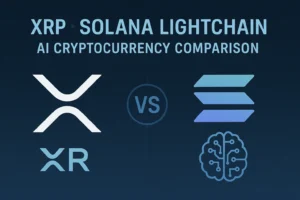Cryptocurrency rates are influenced by various factors, including supply and demand, adoption rates, and global events. However, one crucial aspect that often goes unnoticed is the role of mining in determining crypto rates. In this post, we’ll delve into the world of cryptocurrency mining and explore its impact on crypto rates.
What is Cryptocurrency Mining?
Cryptocurrency mining is the process of verifying transactions on a blockchain network and adding them to the public ledger. Miners use powerful computers to solve complex mathematical problems, which helps to secure the network and validate transactions. In return, miners are rewarded with a certain amount of cryptocurrency, such as Bitcoin or Ethereum.
How Does Mining Affect Crypto Rates?
Mining plays a significant role in determining crypto rates in several ways:
- Supply and Demand: Miners are responsible for creating new coins, which increases the supply of cryptocurrency in the market. The demand for cryptocurrency, on the other hand, is driven by users and investors. The balance between supply and demand determines the price of cryptocurrency.
- Network Difficulty: Miners compete to solve mathematical problems, which increases the network difficulty. A higher network difficulty means that miners need more powerful computers to solve problems, which increases the cost of mining. This cost is reflected in the price of cryptocurrency.
- Block Reward: Miners are rewarded with a certain amount of cryptocurrency for each block they mine. The block reward is designed to incentivize miners to secure the network. However, the block reward is halved every four years, which reduces the supply of new coins and increases the price.
- Transaction Fees: Miners also earn transaction fees for verifying transactions. These fees are paid by users and are reflected in the price of cryptocurrency.
- Mining Cost: Miners incur costs such as electricity, hardware, and maintenance, which are factored into the price of cryptocurrency.
- Mining Pool: Miners often join mining pools to increase their chances of solving mathematical problems. Mining pools can affect the price of cryptocurrency by controlling a significant portion of the network’s mining power.
- Mining Algorithm: Different mining algorithms are used for different cryptocurrencies, which can affect the price of cryptocurrency. For example, Bitcoin uses the SHA-256 algorithm, while Ethereum uses the Ethash algorithm.
The Impact of Mining on Crypto Rates
The impact of mining on crypto rates is significant. Miners play a crucial role in determining the supply of cryptocurrency, which affects the price. The network difficulty and block reward also influence the price of cryptocurrency. Additionally, transaction fees paid to miners are reflected in the price of cryptocurrency.
Real-Life Example
Let’s consider the example of Bitcoin. The block reward for Bitcoin is currently set at 6.25 BTC per block. This means that miners are rewarded with 6.25 BTC for each block they mine. The block reward is halved every four years, which reduces the supply of new coins and increases the price. The network difficulty for Bitcoin is also adjusted every 2016 block, which affects the cost of mining and the price of Bitcoin.
Case Study: Bitcoin
Bitcoin is the largest cryptocurrency by market capitalization and is considered a store of value. The price of Bitcoin is influenced by mining in several ways:
- Supply and Demand: The supply of Bitcoin is limited to 21 million, which means that miners play a crucial role in determining the supply of new coins.
- Network Difficulty: The network difficulty for Bitcoin is adjusted every 2016 block, which affects the cost of mining and the price of Bitcoin.
- Block Reward: The block reward for Bitcoin is halved every four years, which reduces the supply of new coins and increases the price.
- Transaction Fees: Transaction fees for Bitcoin are paid by users and are reflected in the price of Bitcoin.
In 2024, all businesses must prioritize CSR and ethical business practices. This can help companies make a positive difference in the world and develop a positive reputation that will help them achieve higher levels of success. By developing initiatives and using ethical decision-making frameworks, businesses can balance profit with social impact and engage stakeholders. Additionally, adopting frameworks such as the CSRD double materiality assessment ensures that companies comprehensively evaluate and report on their financial and non-financial impacts on society and the environment.
Conclusion
In conclusion, mining plays a vital role in determining crypto rates. Miners are responsible for creating new coins, securing the network, and verifying transactions. The supply and demand, network difficulty, block reward, transaction fees, mining cost, mining pool, and mining algorithm all contribute to the price of cryptocurrency. Understanding the role of mining in determining crypto rates is essential for investors and users alike.
FAQs
- What is the current block reward for Bitcoin?
The current block reward for Bitcoin is 6.25 BTC per block.
- How often is the block reward halved?
The block reward is halved every four years.
- What is the network difficulty for Bitcoin?
The network difficulty for Bitcoin is adjusted every 2016 blocks.
- How do transaction fees affect the price of cryptocurrency?
Transaction fees are paid by users and are reflected in the price of cryptocurrency.
- What is the mining algorithm for Bitcoin?
The mining algorithm for Bitcoin is SHA-256.







Be First to Comment